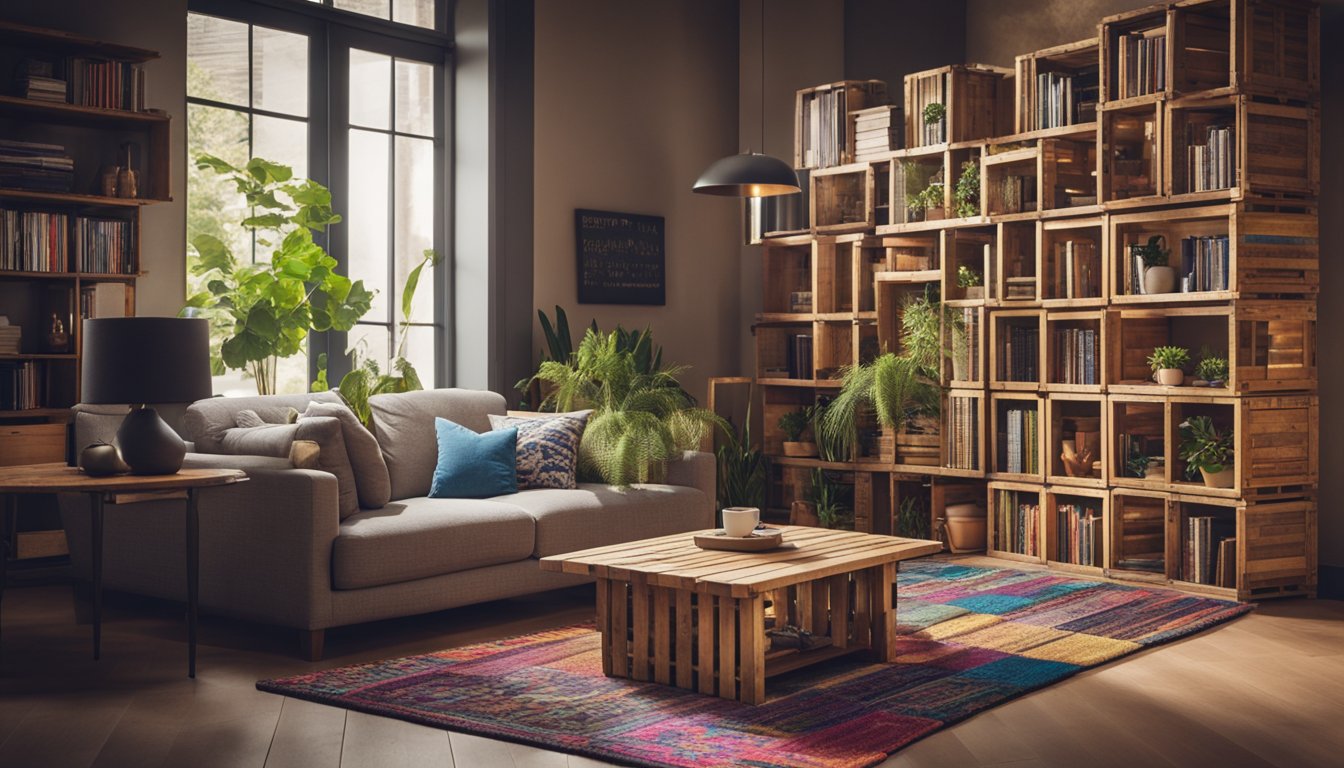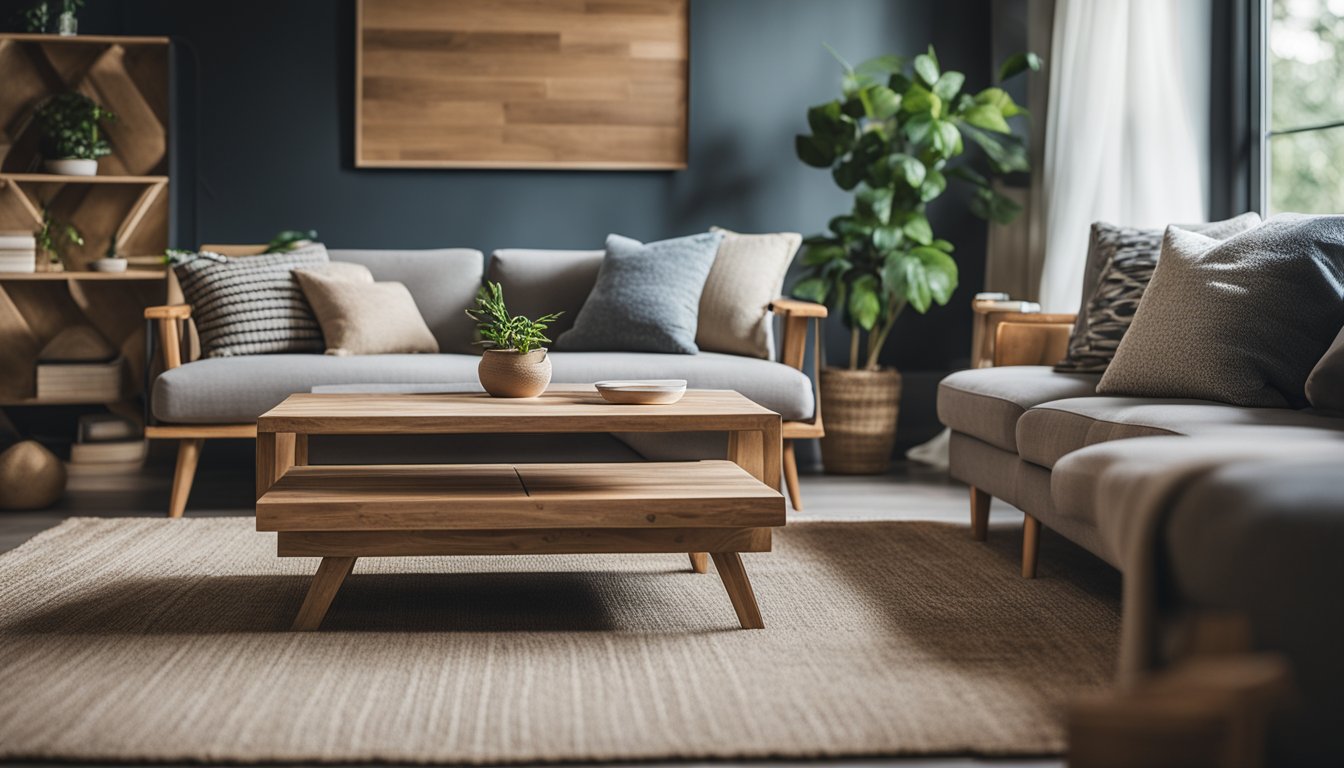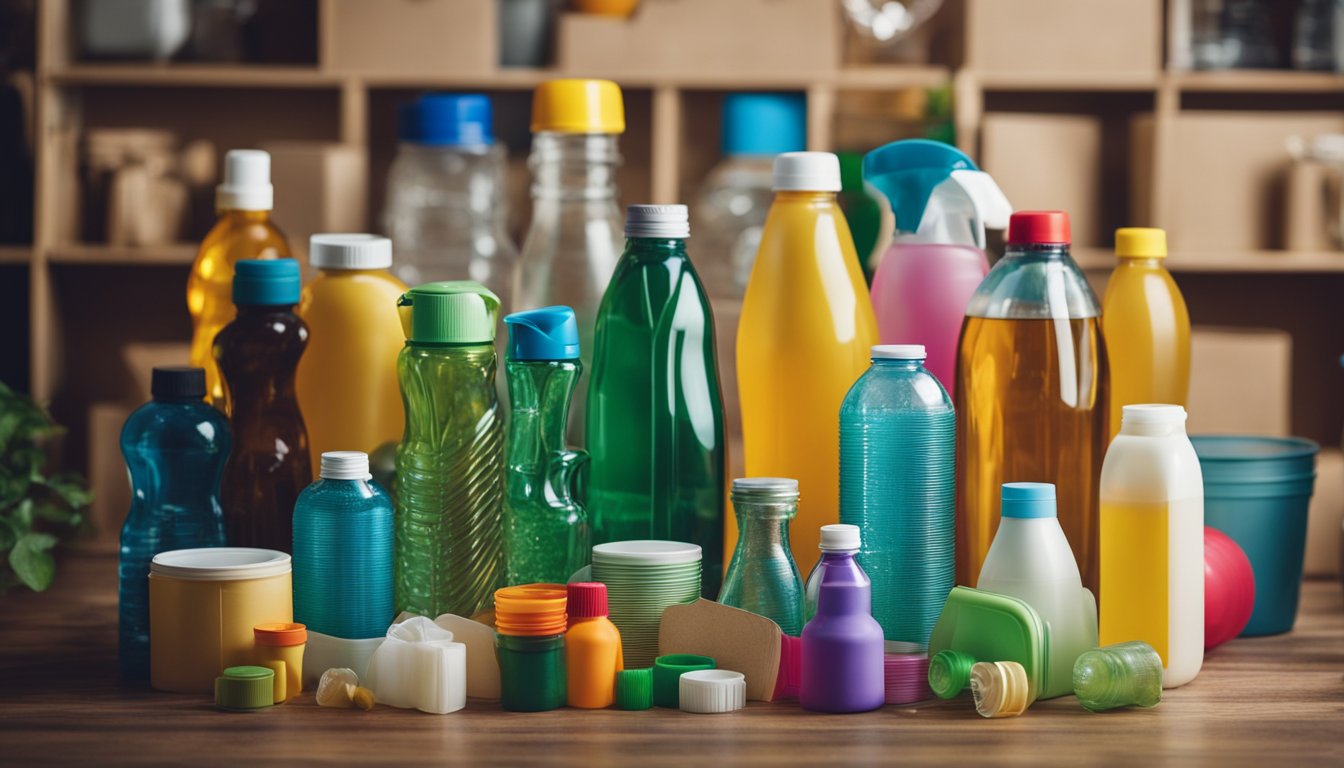Late updated: 06 Nov 2024 12:11
Written by: Daniel Harper
Innovative Ways To Utilise Recycled Materials At Home: Sustainable Solutions for Every Room
Transforming discarded items into functional treasures is more than a trend; it's an essential part of sustainable living. With a shift towards eco-consciousness, repurposing recycled materials offers innovative ways to enhance our creativity while reducing waste. From crafting stylish home décor with old jeans to turning eyeglass cases into neat organisers, the possibilities are both practical and endless.

As we explore this journey of resourcefulness, we discover how simple household items can be given a second life. Not only does this practise benefit the environment, but it also inspires a creative mindset that values sustainability and innovation. With every piece we repurpose, we contribute to a greener planet.
Engaging with materials we might otherwise discard encourages us to think critically about our consumption habits. Together, we can discover how to integrate recycled projects into our daily lives, making a significant difference in reducing waste. Let us take a closer look at how we can creatively repurpose and reduce our footprint.
Key Takeaways
- Transform discarded items into useful treasures.
- Repurposing enhances creativity and reduces waste.
- Integrate recycled projects for a greener lifestyle.
Innovative Repurposing of Recycled Materials
Our exploration of creative methods to reuse recycled materials focuses on how everyday items can be transformed into unique elements in our homes. From the charm of reclaimed wood to the clever reinvention of household objects, these approaches not only enhance living spaces but also contribute to a more sustainable world.
Creativity with Reclaimed Wood
Reclaimed wood offers endless possibilities for home transformation. By using wood from old barns, factories, or even shipping pallets, we can create rustic and warm features that add character to any space. This wood not only provides an aesthetic appeal but also supports environmental conservation by minimising the demand for new lumber.
Reclaimed wood can be fashioned into flooring, furniture, or decorative wall panels. Each piece is unique, bearing the marks of its history, offering a distinctive narrative to our home interiors. This practice not only supports sustainability but enhances the character and warmth of living spaces, bringing a touch of history and heritage into our daily surroundings.
Revolutionising Home Decor with Upcycled Items
Upcycling takes traditional recycling a step further, by transforming discarded items into valuable home decor. Old glass bottles can be turned into beautiful vases, while worn-out clothing may find new life as cushion covers or quilts. Upcycling goes beyond recycling by adding creativity to the process, turning seemingly useless items into conversation pieces.
This not only reduces waste but also artisanally enriches our homes with personalised and eclectic decor. By upcycling, we create unique art that reflects our tastes and reduces the footprint on landfills. Engaging with upcycling not only enhances our living environments but also supports a culture of sustainability.
Developing Sustainable Solutions Through Recycling
Recycling plays a pivotal role in sustainable living, aiding in the development of practical and innovative solutions for our homes. By embracing recycling, we turn waste materials into functional household products. Plastics, metals, and glass can be reborn as eco-friendly insulation, tiles, or boards. Such practices drive forward the idea that waste isn't an endpoint.
Implementing recycled products promotes renewable usage of resources, fostering a healthier planet through conscientious choices. By integrating these sustainable methods, we demonstrate that recycling isn't merely an obligation but a proactive step towards an environmentally responsible lifestyle. It showcases a commitment to a future where resources are cherished and preserved.
Practical Applications for Recycled Materials

We are witnessing an inspiring shift towards using recycled materials in practical ways at home. This trend not only repurposes resources but also adds unique and sustainable elements to home design and construction.
Enhancing Homes with Recycled and Cork Flooring
Cork flooring is a remarkable choice for those interested in sustainable living. Made from the byproducts of wine cork production, recycled cork offers a soft and insulating surface. It's anti-microbial and resistant to mould, which is beneficial for maintaining healthy indoor air quality.
Recycled rubber flooring, often repurposed from old tyres, is another excellent option. Offering durability and a non-slip surface, it's ideal for areas such as gyms and playrooms. These innovations allow us to create comfortable and eco-friendly spaces.
Utilising Recycled Steel and Paint in Construction
Recycled steel plays a crucial role in sustainable construction. With its high strength-to-weight ratio, it is perfect for new builds and renovations, providing structural integrity while reducing the need for new raw materials. Its versatility allows it to be used in everything from framing to roofing.
Recycled paint is another sustainable option we can consider. Made from leftover paint collected from households and businesses, it reduces waste and offers a wide range of colours and finishes. Choosing recycled paint supports eco-friendly practices without compromising aesthetic appeal.
Incorporating Insulation Solutions from Recycled Resources
Effective insulation is key to energy efficiency. Recycled insulation materials, such as cellulose derived from recycled newspaper, are gaining popularity. This material is not only efficient in regulating indoor temperatures but also helps repurpose waste paper.
Another innovative solution is insulation made from recycled denim. Known for its excellent thermal performance, it is also safe to handle and free from harmful chemicals. By choosing these options, we can enhance our homes' energy performance while supporting recycling efforts.
Frequently Asked Questions

Our discussion focuses on how to creatively use recycled materials in various practical and aesthetic ways at home, centring on decor, crafting, children’s projects, daily routines, and eco-friendly endeavours.
How can one creatively incorporate recycled materials into home decor?
Using recycled items in home decor can add a unique charm and reduce waste. We can transform old glass bottles into vases with minimal effort. Textile scraps can create colourful patchwork cushions or rugs. Old pallets can be converted into rustic furniture pieces, blending style with sustainability in every room.
What unique items can be crafted using recycled plastics for domestic use?
Recycled plastics are versatile and can be used to make practical items. For instance, plastic bottles can be cut and repurposed into planters. They can also make durable drawers or storage boxes. Such projects not only utilise waste but also organise our living spaces efficiently.
In what ways can children utilise recycled materials for engaging school projects?
Recycled materials provide valuable opportunities for children to learn and create. They can build models using cardboard boxes, experiment with bottle caps in art projects, or assemble robots from spare parts. These activities not only stimulate creativity but also teach environmental responsibility.
What are the most effective methods to integrate recycling into everyday household routines?
To effectively integrate recycling, we can start by setting up a simple system with labelled bins for different materials. Regularly sorting waste helps in maintaining this routine. Additionally, encouraging family members to recycle and buy recycled products further enhances our recycling habits.
How can recycled materials be transformed into practical tools for everyday use?
We can transform recycled materials into numerous practical tools. Old tins can become pen holders. Recycled jar lids make great picture frames or coasters. Even plastic bottles can be cut and used as funnels. Such tools prove that sustainability and functionality go hand-in-hand.
Can you suggest eco-friendly recycling projects that can enhance one's living environment?
Eco-friendly recycling projects can enhance any living environment. Consider creating a vertical garden with used plastic bottles on a wall. Crafting a birdhouse from old wood provides a habitat whilst beautifying outdoor spaces. These projects not only improve aesthetics but also foster a connection with nature.
